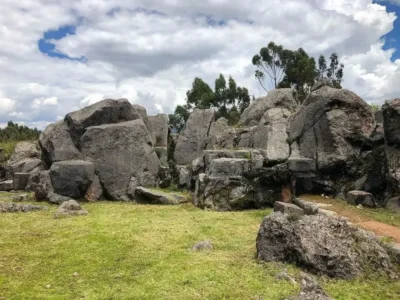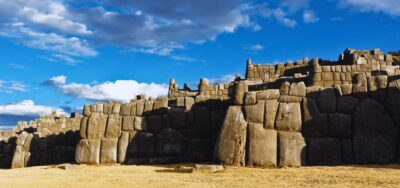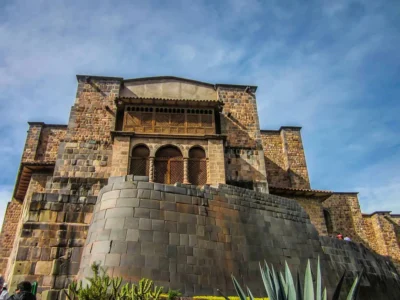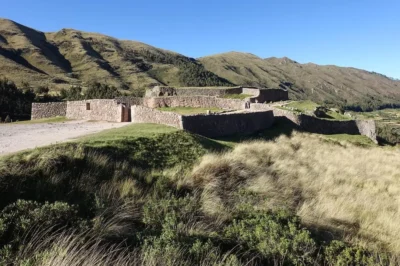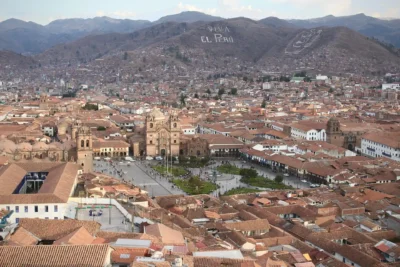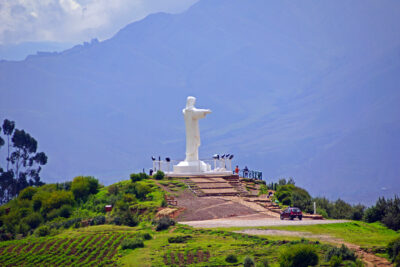Are you planning a trip to Cusco and want to dive into the mysteries of Inca culture? If you’re looking for a place that combines history, advanced engineering, and a special connection with nature, Tambomachay is the perfect destination.
Tambomachay, also known as “The Inca’s Bath,” is one of the most fascinating archaeological sites near Cusco. Its architecture is designed to channel and direct water from natural springs, showcasing the Incas’ advanced knowledge of hydraulic engineering.
Location: 8 km from Cusco, on the slopes of the Andes.
Function: Believed to be a ritual center related to water worship and purification.
Features: Includes canals, fountains, and perfectly carved stone structures.
Tips for visiting:
- Can be combined with nearby sites like Qenqo or Puca Pucara.
- Bring sunscreen and water.
- Best visited in the morning to avoid crowds.
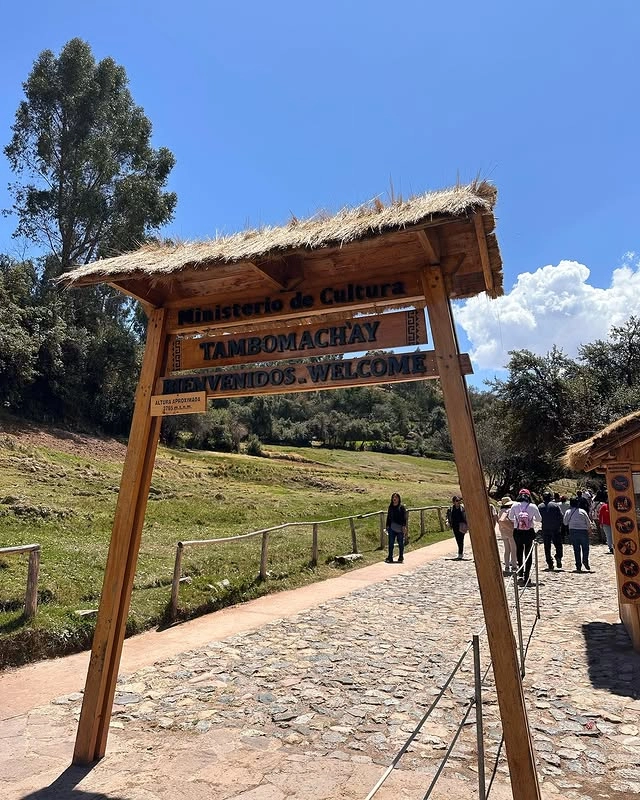
Origin of the Name and Meaning of Tambomachay
The name “Tambomachay” comes from two Quechua words: “tambo,” meaning “resting place” or “inn,” and “machay,” which translates to “cave” or “sacred place.” In this way, Tambomachay can be interpreted as “resting place” or “place of waters.”
This name reflects its possible dual function as a site where Inca travelers or messengers might have rested, as well as an important ceremonial center related to water, which was considered a sacred element by the Incas.
History and Function During the Inca Era
The Role of Tambomachay as a Royal Retreat
Tambomachay was closely linked to the Inca nobility. It is believed that this site was a royal retreat where rulers and the Inca elite would go to rest and perform ceremonies. Its location near Cusco made it strategic for those who needed to escape the hustle and bustle of the capital and connect with nature. The tranquility of the place, combined with the sacred waters, made it an ideal space for meditation and relaxation.
Importance in the Worship of Water
For the Incas, water was not just a resource but a sacred element, vital for fertility and life. At Tambomachay, the fountains and channels were designed with advanced engineering to ensure the continuous flow of water, symbolizing the connection between the earthly and spiritual worlds. Rituals were performed to honor Pachamama and the water deities, expressing gratitude for the constant supply of this essential resource.
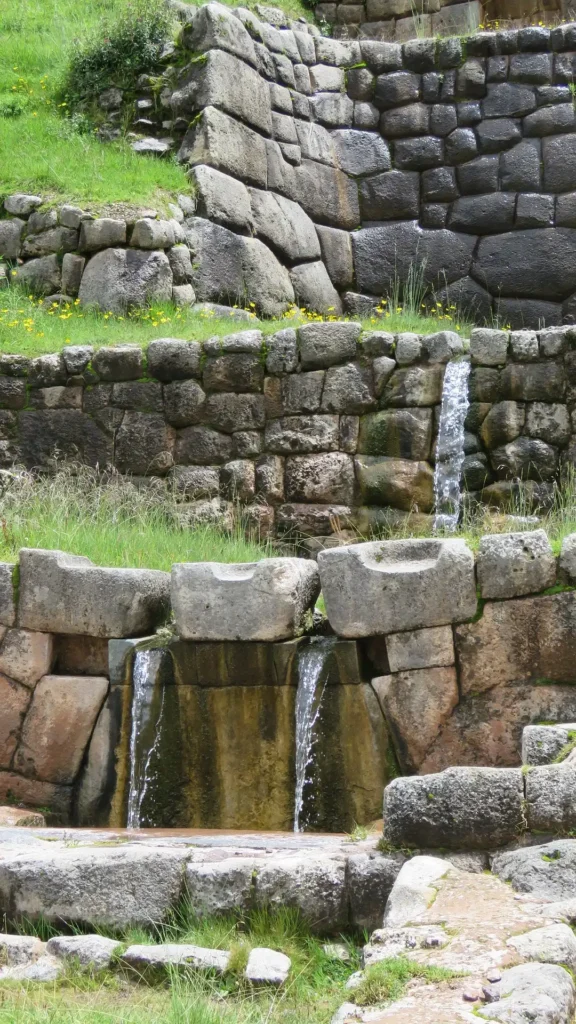
Architecture and Mastery in Stonework
Hydraulic Engineering: The Famous Inca Baths
The “Inca Baths” at Tambomachay are a testament to the advanced hydraulic engineering of the Incas. Using natural springs, the Incas channeled water through aqueducts and perfectly carved stone canals. This system reflects their deep understanding of hydraulics and the symbolic importance of water in their culture.
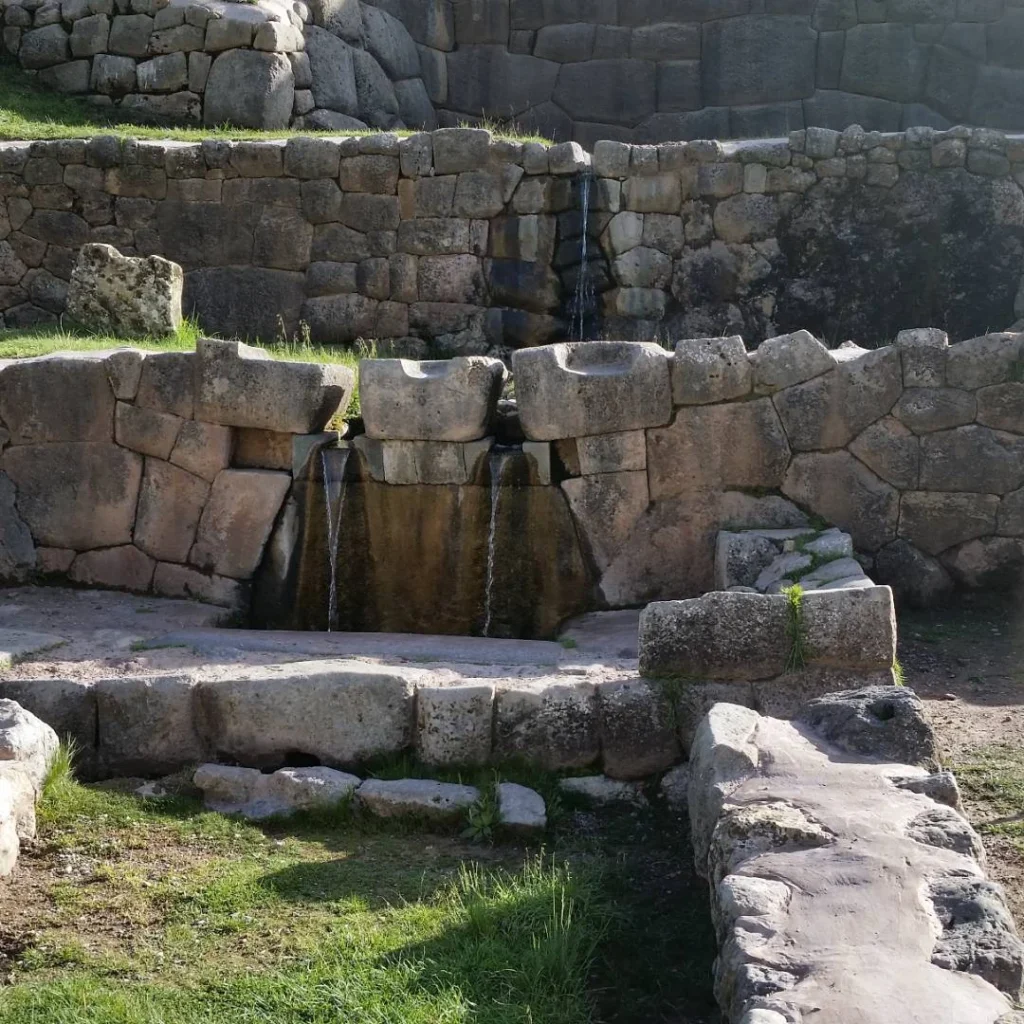
Harmony with Tambomachay’s Natural Surroundings
The architecture of Tambomachay reflects a perfect integration with the natural surroundings. Its terraces and stone walls adapt to the mountain’s terrain, demonstrating a deep harmony between construction and nature.
The Incas respected and honored the landscape, striving for their structures to complement the environment. This connection between the natural and the built makes Tambomachay a magical place, inviting visitors to experience the balance between these two elements.
Where Does the Water in Tambomachay Come From?
One of the mysteries of Tambomachay is the origin of the water that constantly flows through its fountains. Although the system of canals and aqueducts is evident, the spring from which it originates remains a mystery.
This uninterrupted flow has fascinated archaeologists and engineers, who continue to study how the Incas managed to capture and maintain water so efficiently. This phenomenon adds an air of mysticism to Tambomachay and highlights the Incas’ advanced technical ability to manage water resources.
Practical Information for Visiting Tambomachay
How to Get There: Location and Access Map
Location:
Tambomachay is located about 8 km northeast of Cusco, on the route to the Sacred Valley.
Transportation Options:
Guided Tour:
Another option is to book a tour that includes Tambomachay along with other nearby sites like Puca Pucara and Sacsayhuamán, making access easier and providing a complete experience.
Public or Private Transportation:
You can take a bus or taxi from Cusco to the starting point of the path to Tambomachay. From there, the site is just a few minutes’ walk away.
Guide for Visiting from Cusco
Independent Transportation: You can take a taxi or a shared bus to the entrance of Tambomachay.
Guided Tour: Join our guided tour that includes Tambomachay, Sacsayhuamán, and Puca Pucara, offering a more complete experience.
Tourist Ticket: The Cusco Tourist Ticket covers entry to several archaeological sites, including Tambomachay, allowing you to make the most of your visit.
Practical Tips for Travelers
- Wear comfortable walking shoes
- Consider a hat or cap for sun protection
- Bring snacks or light food
- Check the weather before your visit
- Arrive early to avoid crowds
- Respect the rules of the archaeological site
Gallery of Images of Tambomachay
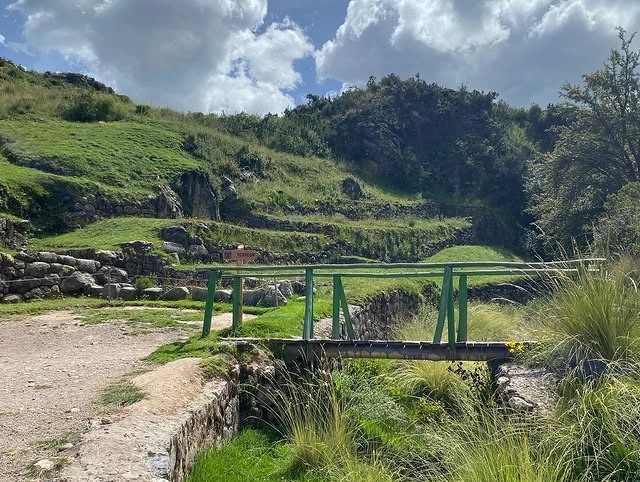
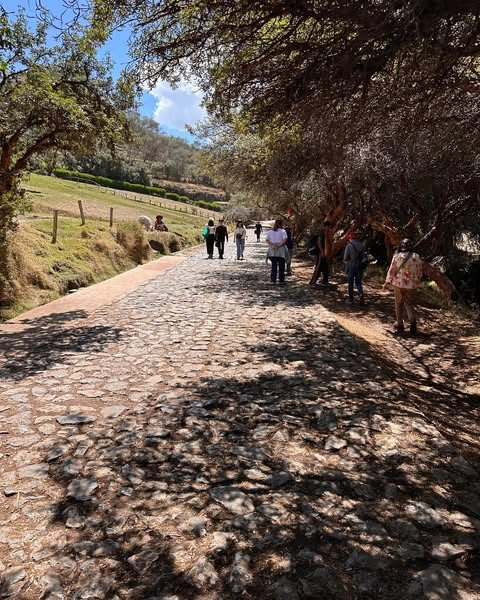
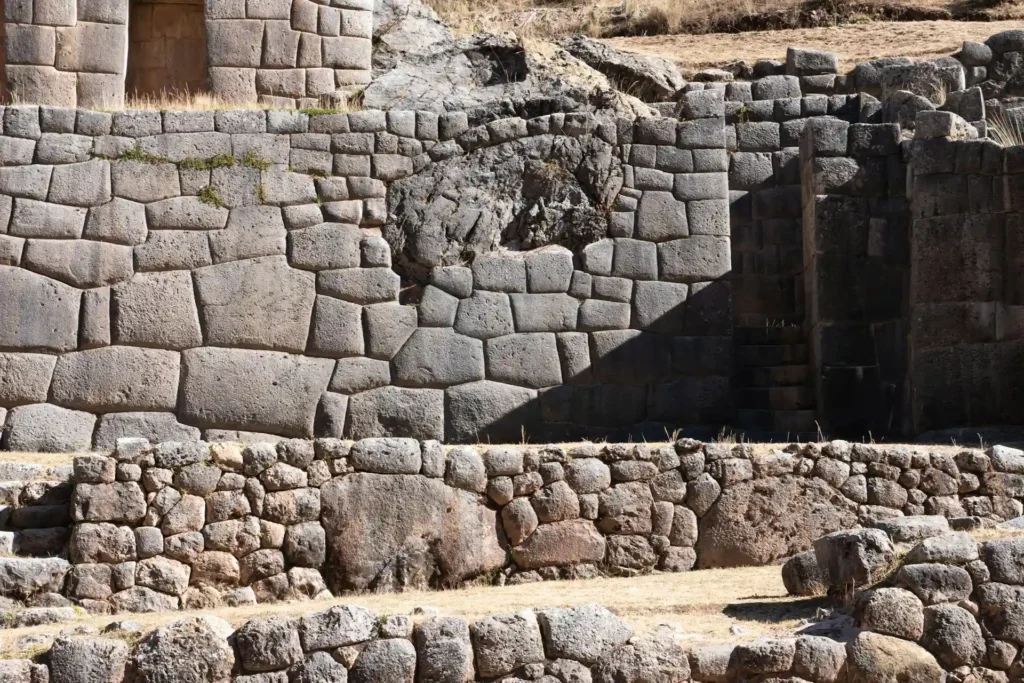
See Also: Other Nearby Archaeological Sites
Tambomachay is just one of the many archaeological sites surrounding Cusco. Other nearby places to visit include:
Puca Pucara: An archaeological site that served as a checkpoint and rest stop on the way to the Sacred Valley. Known for its terrace structures and walls, it is also believed to have had military and administrative functions.
Qenqo: A ceremonial center notable for its complex stone labyrinths and rock-carved altars. This site was used for religious rituals, and its architecture highlights the Incas’ skill in manipulating stone.
Sacsayhuamán: A majestic fortress with massive stone walls, famous for its precise architecture and connection to the history of Cusco. Its construction showcases the engineering prowess of the Incas and is considered one of the city’s most iconic sites.
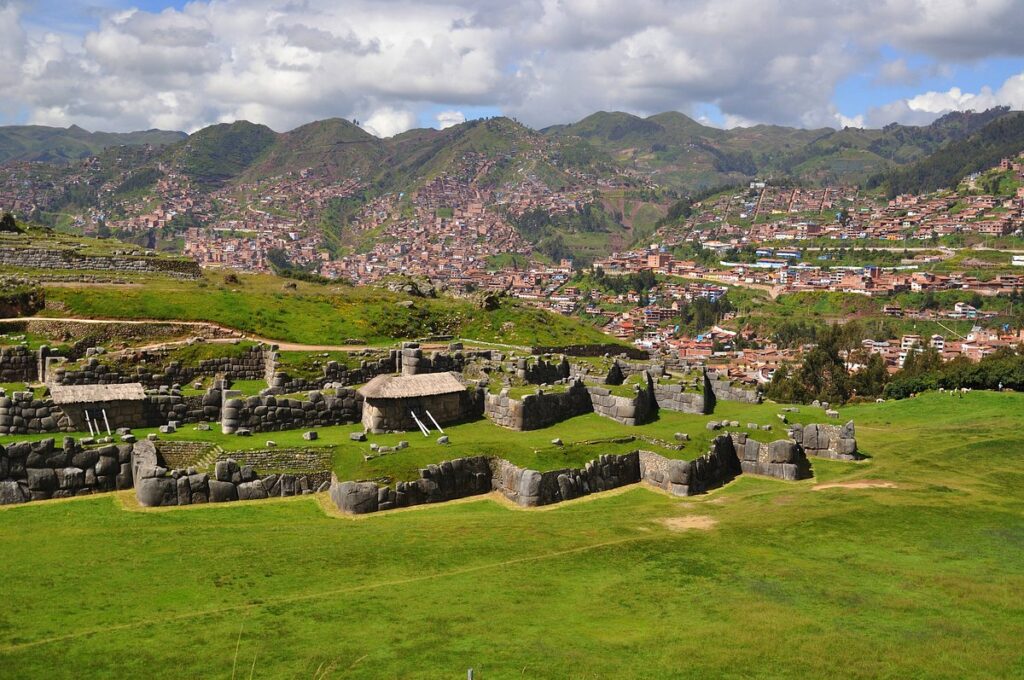
Each of these sites offers a unique perspective on Inca culture and architecture, allowing visitors to better understand the grandeur of the Inca Empire.
Resources and External Links for Further Reading
Ministry of Culture of Peru: Provides official information about the history and archaeology of Tambomachay and other Inca sites. Visit their website for details and educational resources.
Inka Museum: Located in Cusco, this museum offers a collection of artifacts that provide context on Inca culture, with a particular focus on water management and hydraulic engineering—relevant topics for Tambomachay.
Books and Documentaries on the Inca Empire: There are various books and documentaries that delve into the history, architecture, and culture of the Incas. Some focus on hydraulic engineering and water-related rituals, key elements of Tambomachay.
These resources are ideal for those seeking a deeper understanding of the history and wonders of Tambomachay and its context within the Inca Empire.
